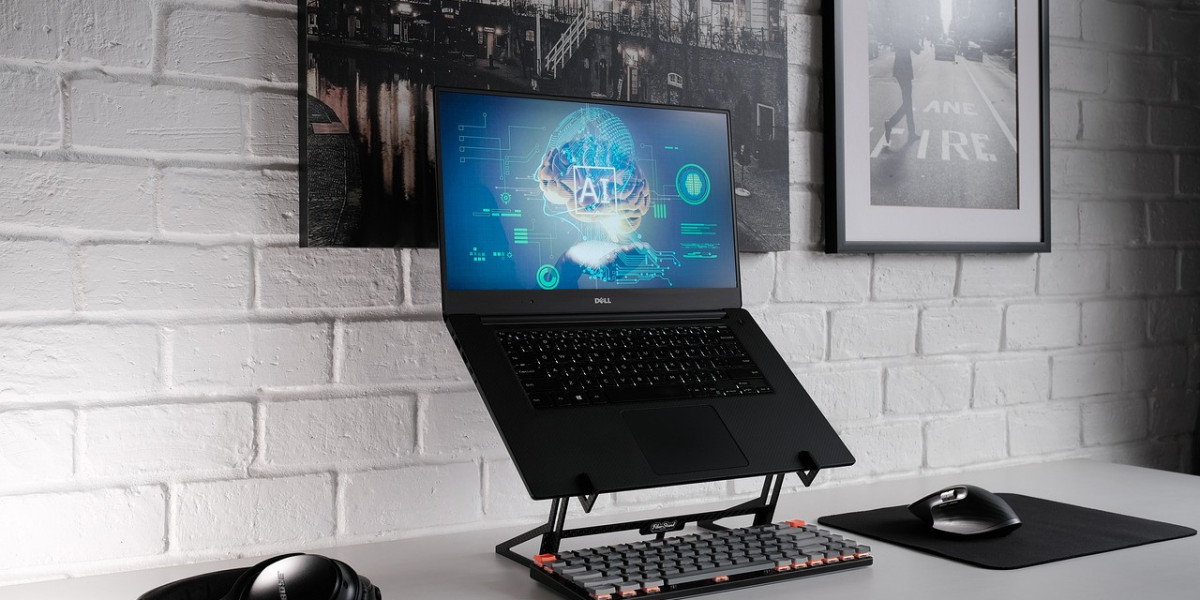Audio-based medical diagnostics is an emerging field that leverages sound, acoustics, and machine learning to improve the accuracy and efficiency of diagnosing a wide array of health conditions. Traditionally, medical diagnostics have relied heavily on imaging techniques like X-rays and MRI scans or invasive procedures like biopsies. However, audio-based methods are now gaining traction as non-invasive, cost-effective, and reliable alternatives for identifying health issues, particularly those related to the heart, lungs, and respiratory system.
This article explores the key innovations in audio medical diagnostics, their applications, the technology driving them, and the challenges that lie ahead.
The Science Behind Audio Diagnostics
Audio diagnostics, also referred to as acoustic diagnostics, involves using sound waves or vibrations to gather information about a patient's body. For instance, human organs and tissues produce distinct acoustic signals when they function, and abnormalities like blockages or irregularities often lead to detectable changes in those sounds. Medical devices equipped with advanced sensors and machine learning algorithms can pick up these minute variations in sound, which doctors then analyze to diagnose specific health conditions.
Traditionally, doctors have used stethoscopes to listen to the sounds of the heart and lungs. However, modern audio diagnostics go much further by incorporating digital technology to analyze and interpret those sounds with greater accuracy and detail.
Key Innovations in Audio Medical Diagnostics
Digital Stethoscopes
Traditional stethoscopes have been essential tools for doctors for decades, helping them listen to heartbeats, lung sounds, and bowel movements. However, the human ear has its limitations. Digital stethoscopes, equipped with microphones and digital signal processors, take diagnostics to the next level by amplifying sounds and filtering out background noise. Additionally, they can record sounds, allowing for further analysis and comparison over time.Modern digital stethoscopes often include AI-driven diagnostic algorithms that can detect abnormal heart rhythms, murmurs, and respiratory sounds. These devices are now capable of identifying conditions like pneumonia, asthma, and congestive heart failure with greater accuracy than manual auscultation.
Artificial Intelligence (AI) and Machine Learning (ML) in Audio Diagnostics
AI and ML are revolutionizing audio-based medical diagnostics. These technologies are capable of analyzing large datasets of recorded sound from patients to detect patterns indicative of specific diseases. For example, AI algorithms can distinguish between normal and abnormal lung sounds, such as crackles, wheezes, or rhonchi, which can indicate respiratory illnesses like chronic obstructive pulmonary disease (COPD), asthma, or pneumonia.Moreover, AI-driven software can assist in diagnosing heart conditions by analyzing heartbeats for signs of arrhythmias, valve abnormalities, or heart failure. By utilizing data from thousands or even millions of patients, AI algorithms become better at recognizing the subtle audio signatures of various medical conditions.
Smartphone-Based Audio Diagnostic Tools
Another major innovation is the rise of smartphone-based diagnostic tools. These apps use the phone’s built-in microphone to record and analyze sounds from the human body, making healthcare more accessible in resource-limited settings. For example, researchers have developed apps that use a smartphone's microphone to record lung sounds, analyze them, and provide a preliminary diagnosis of respiratory conditions.These tools are particularly useful in remote areas where access to medical equipment may be limited. By providing a simple, portable, and cost-effective diagnostic tool, smartphones can help bridge the gap between rural and urban healthcare, making medical diagnostics more equitable.
Wearable Audio Diagnostic Devices
Wearable devices such as chest patches, earpieces, and wristbands are being developed to continuously monitor a patient's vitals and acoustic signals. These devices collect real-time audio data and can alert the user or healthcare providers to abnormalities like irregular heart rhythms or breathing patterns. For example, a chest patch can monitor a patient’s heartbeats throughout the day and detect atrial fibrillation or other cardiac anomalies before they become critical.Wearable technology is also being explored in neonatal care, where monitoring a baby’s heartbeat or breathing patterns continuously can help detect early signs of distress or infection.
Applications of Audio Medical Diagnostics
Cardiac Health Monitoring
One of the most common uses of audio diagnostics is in cardiology. Digital stethoscopes and wearable devices enable doctors to detect heart murmurs, valve issues, arrhythmias, and heart failure by analyzing heart sounds. AI-enhanced algorithms can detect subtle abnormalities that a human ear might miss, making diagnostics more reliable and reducing the risk of misdiagnosis.Respiratory Health
Lung and respiratory diseases are another area where audio diagnostics play a crucial role. Conditions like asthma, COPD, bronchitis, and pneumonia alter the sounds of airflow in the lungs, which can be detected using advanced stethoscopes or even smartphone apps. AI algorithms trained on lung sounds can distinguish between different respiratory conditions by analyzing breath patterns, the presence of wheezes, or abnormal crackles.Neonatal Care
Audio diagnostics are proving invaluable in neonatal care, where non-invasive monitoring is essential. Devices that record and analyze heart and lung sounds can be used to detect early signs of respiratory distress, infections, or congenital heart problems in newborns. This real-time monitoring allows for quicker intervention and better outcomes for vulnerable infants.Sleep Apnea and Snoring Detection
Sleep disorders like obstructive sleep apnea (OSA) and snoring are often diagnosed using audio data. Devices such as wearable microphones or smartphone apps record sounds during sleep to detect breathing irregularities. Machine learning algorithms analyze these sound patterns to diagnose sleep apnea or other sleep-related disorders, offering patients an alternative to traditional sleep studies conducted in clinics.
Advantages of Audio Diagnostics
Non-Invasive
Audio diagnostics offer a non-invasive alternative to many traditional diagnostic methods. Rather than undergoing imaging or surgical procedures, patients can have their conditions diagnosed through sound, reducing discomfort, risk, and recovery time.Cost-Effective
In many cases, audio diagnostics are more affordable than other methods like imaging or lab-based tests. Smartphone-based tools and digital stethoscopes can be used in both high-tech medical facilities and rural clinics with minimal infrastructure, making diagnostics more accessible and affordable.Portable and Accessible
Devices like digital stethoscopes and smartphone apps make audio diagnostics portable and easy to use. Healthcare professionals can bring these tools to patients’ homes, schools, or remote areas, improving healthcare accessibility, especially in underdeveloped regions.Continuous Monitoring
Wearable devices provide the advantage of continuous monitoring, allowing for real-time detection of abnormalities. This constant surveillance is particularly valuable for chronic conditions like heart disease or sleep apnea, where early detection of changes can prevent severe complications.
Challenges in Audio Diagnostics
Data Privacy and Security
As audio diagnostic tools gather large amounts of data, privacy and security concerns arise. Medical sound data, like other health information, is sensitive and requires stringent security measures to protect against unauthorized access or breaches.Accuracy and Reliability
While AI and machine learning have greatly improved the accuracy of audio diagnostics, there is still room for error, particularly in noisy or uncontrolled environments. False positives or negatives can occur, and devices may not always perform as well outside of clinical settings.Training and Adoption
For audio diagnostics to become widely adopted, healthcare professionals must be trained in using these tools and interpreting their results. Resistance to new technologies and a lack of familiarity may slow the adoption of audio-based diagnostics in some medical communities.
Future of Audio Medical Diagnostics
The future of audio medical diagnostics looks promising, as advancements in machine learning, AI, and wearable technology continue to improve the accuracy and accessibility of diagnostic tools. We can expect to see more portable, cost-effective devices entering the market, making healthcare more inclusive and accessible across the globe.
Additionally, ongoing research is likely to expand the applications of audio diagnostics to other areas of medicine, such as gastrointestinal disorders, cancer detection, and even mental health monitoring through voice analysis.
Conclusion
Audio medical diagnostics is a groundbreaking approach that has the potential to transform healthcare. By harnessing the power of sound and integrating it with AI, wearable technology, and machine learning, the medical community is finding new ways to diagnose conditions earlier, more accurately, and less invasively than ever before. As this technology evolves, it will continue to play a critical role in shaping the future of diagnostics and personalized medicine.


